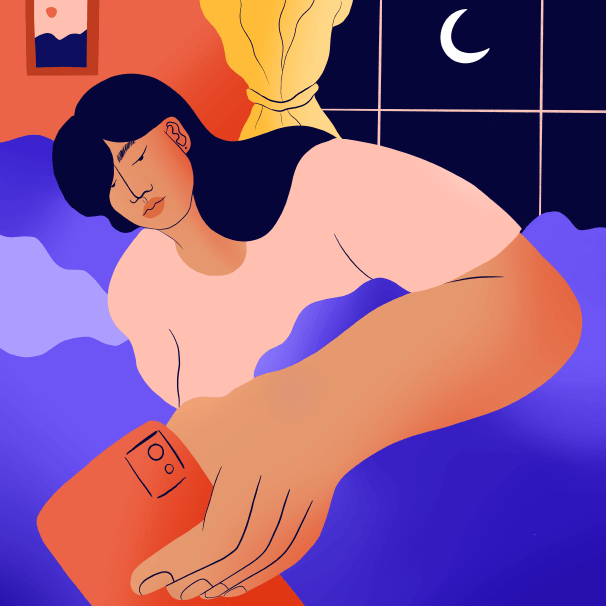There are lots of ways to feel better without harming yourself.
Self-injury, also known as self-harm, is the act of trying to get rid of an unbearable mood by causing physical harm that damages the body. For many young people, self-injury is the best method they have found for dealing with the pain in their lives. Although it may sound contradictory, since this involves hurting oneself, self-injury can sometimes be a method young people use to help them survive. However, there are some individuals who use self-injury as a “dry run” before a suicide attempt. If you are feeling suicidal, please know that you are not alone. You can call the Trevor Lifeline at 1-866-488-7386 or the National Suicide Prevention Lifeline.
A common form of self-injury is cutting, which is when someone makes shallow cuts on their body using a knife or another sharp object – but 75% of those that self-injure use multiple methods. Other methods include burning, scratching, picking and/or interfering with wound healing, head banging and the breaking of bones.
If you self-injure, using basic first aid and safety skills is always important. It’s important to recognize that self-injury can cause a variety of complications, like permanent scarring, or feelings of shame, guilt and low self-esteem. Even if a person doesn’t mean to hurt themselves seriously, life-threatening problems can happen; such as blood loss, if major blood vessels or arteries are cut. Self-injury can also lead to accidental or deliberate suicide.
Fortunately, there are many alternatives to self-injury that can produce the same relief. If you’re ready to stop, consider these options to find what works for you:
- If cutting helps release anger… hit a pillow, stomp the ground, rip paper, flatten cans.
- If cutting reduces tension… run, do yoga, meditate, stretch a rubber band and let it go.
- If cutting helps ease sadness… chat with a friend, listen to a favorite song, eat some comfort food, write out your feelings, do something that makes you feel supported.
- If cutting helps you feel less numb… create a sharp physical feeling, like putting your hand in ice water, snapping a rubber band on your wrist, or clapping your hands hard.
FAQ
- Why do people self-harm?
- Can self-injury have any complications?
- I want to stop hurting myself, but I can’t figure out where to begin.
- I feel super alone with all of this. Who can I trust to help me?
Question:
1. Why do people self-harm?
Answer:
Most people self-harm as a way of dealing with difficult, painful, overwhelming emotions. However, every person does it for a different reason. It’s important to understand the meaning self-harm has for each individual before assuming why they’re hurting themselves.
People self-harm to:
- Relieve tension and overwhelming emotions.
- Return them to reality and make them feel alive again, sometimes after seeing blood.
- Establish control after feeling like they have little to no control over their environment.
- Seek security and a reliable outcome. For example, cutting will always produce blood.
- Feel special and unique. Some say that disapproval adds to a sense of satisfaction.
- Influence or punish others, or prove how strong their emotions are.
- Punish themselves due to negative self-perceptions.
- Evoke a good mood. One theory is that the pain involved in self-injury may release endorphins (natural painkillers) that reduce emotional pain. A cycle is formed in which habitual self-injurers hurt themselves in order to feel better.
Whatever the reason, it is important to recognize that self-harm is a symptom of larger concerns. If you know someone who may be suicidal and is self-harming, please encourage them to call the Trevor Lifeline at 1-866-488-7386. It’s free and available 24/7.
Question:
2. Can self-harm have any complications?
Answer:
Self-harming, like cutting, might help the person feel better briefly, but the longer it goes on, the more dangerous it can become. Remember, self-harm is the act of physically hurting yourself. Serious blood loss after hitting a vein or artery, permanent scarring, serious infections, or even accidental suicide, are a few examples of life-threatening medical emergencies that can happen if someone who self-harms isn’t careful. Self-harming can also increase someone’s feelings of shame, guilt, depression, and lack of control.
Question:
3. I want to stop hurting myself, but I can’t figure out where to begin.
Answer:
There are few questions that might be helpful to think about as you start your process: Have you found new ways to handle the triggers that usually spark your desire to hurt yourself? Have you thought about other activities you can do instead of self-injuring? Is there a reason why you’re ready to stop now? Do you have an emotional support system, like people who you can talk to about your self-injury?
If you start asking yourselves these questions and find that you are not comfortable with the idea of stopping, don’t be discouraged. You can work toward gaining more control over your self-injury by setting boundaries with yourself about when and how much you hurt yourself.
If you feel like hurting yourself, there are lots of ways to help yourself feel better without putting yourself at risk. Think about how you feel before and after you hurt yourself. What happens after you’ve hurt yourself – do you feel less sad, more in control, or less angry? There are alternative activities you can do to help find the same relief you currently find through self-injury. Check out these ideas to get started, or come up with some of your own:
- If cutting helps release anger…hit a pillow, stomp the ground, rip paper, flatten cans.
- If cutting reduces tension…run, do yoga, meditate, stretch a rubber band and let it go.
- If cutting helps ease sadness…chat with a friend, listen to a favorite song, eat some comfort food, write out your feelings, do something that makes you feel supported.
- If cutting helps you feel less numb…create a sharp physical feeling, like putting your hand in ice water, snapping a rubber band on your wrist, or clapping your hands hard.
- If cutting helps you feel in control…play a game where you can control a character’s experiences, write stories, set physical activity goals for yourself and beat your record.
Keep in mind that many people continue to search, grow, and adjust the way they cope with pain and crisis their whole lives. What works for us one day might not work the next—and that’s completely okay! You are not alone. If you ever want help because you think you might hurt yourself, please call the Trevor Lifeline – it’s available 24/7 at 1-866-488-7386.
Question:
4. I feel super alone with all of this. Who can I trust to help me?
Answer:
It can be very difficult to stop cutting, especially when you feel like you are going through all of this alone. It’s important to find someone who is understanding and can listen to what you’re going through. Is there an adult in your life with whom you feel like you connect? It might be a teacher, family member, or someone in another area of your life, like a faith leader. Many people find that having a safe space to talk about their feelings can help them work through some of the reasons why they choose to self-harm. If you think that speaking to someone might help you fight the urge to cut, or if you are ever feeling like you might hurt yourself, please call The Trevor Project’s 24-hour Lifeline at 1-866-488-7386.
Resources
- Helpguide.org – Cutting and Self-Harm
- S.A.F.E. Alternatives (Self Abuse Finally Ends)
- Cornell University | Recovery Research and Resources
- How to Support Someone Who Self-Harms
- Family, friends and loved ones of people who self-harm
Through The Trevor Support Center you are able to link to other websites which are not under the control of The Trevor Project. The Trevor Project does not review or ensure the accuracy of the content on other sites.
Help us continue to provide 24/7 support to LGBTQ+ young people and empower allies to deepen their commitment through advocacy, education, and affirming content.


